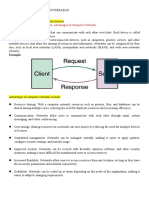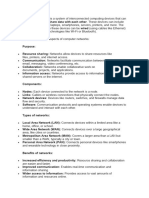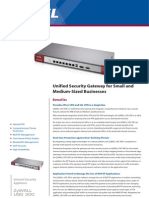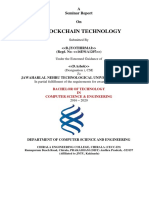0% found this document useful (0 votes)
34 views6 pagesNetworking and Data Communication
Computer networks consist of interconnected devices that communicate to share resources and information, with key components including nodes, NICs, switches, routers, and firewalls. They can be categorized into various types such as LAN, WAN, and P2P networks, each serving different purposes and exhibiting unique characteristics. The roles of computer networks encompass communication, resource sharing, remote access, and support for applications like e-commerce and IoT.
Uploaded by
ronoh71Copyright
© © All Rights Reserved
We take content rights seriously. If you suspect this is your content, claim it here.
Available Formats
Download as DOCX, PDF, TXT or read online on Scribd
0% found this document useful (0 votes)
34 views6 pagesNetworking and Data Communication
Computer networks consist of interconnected devices that communicate to share resources and information, with key components including nodes, NICs, switches, routers, and firewalls. They can be categorized into various types such as LAN, WAN, and P2P networks, each serving different purposes and exhibiting unique characteristics. The roles of computer networks encompass communication, resource sharing, remote access, and support for applications like e-commerce and IoT.
Uploaded by
ronoh71Copyright
© © All Rights Reserved
We take content rights seriously. If you suspect this is your content, claim it here.
Available Formats
Download as DOCX, PDF, TXT or read online on Scribd
/ 6
























































































